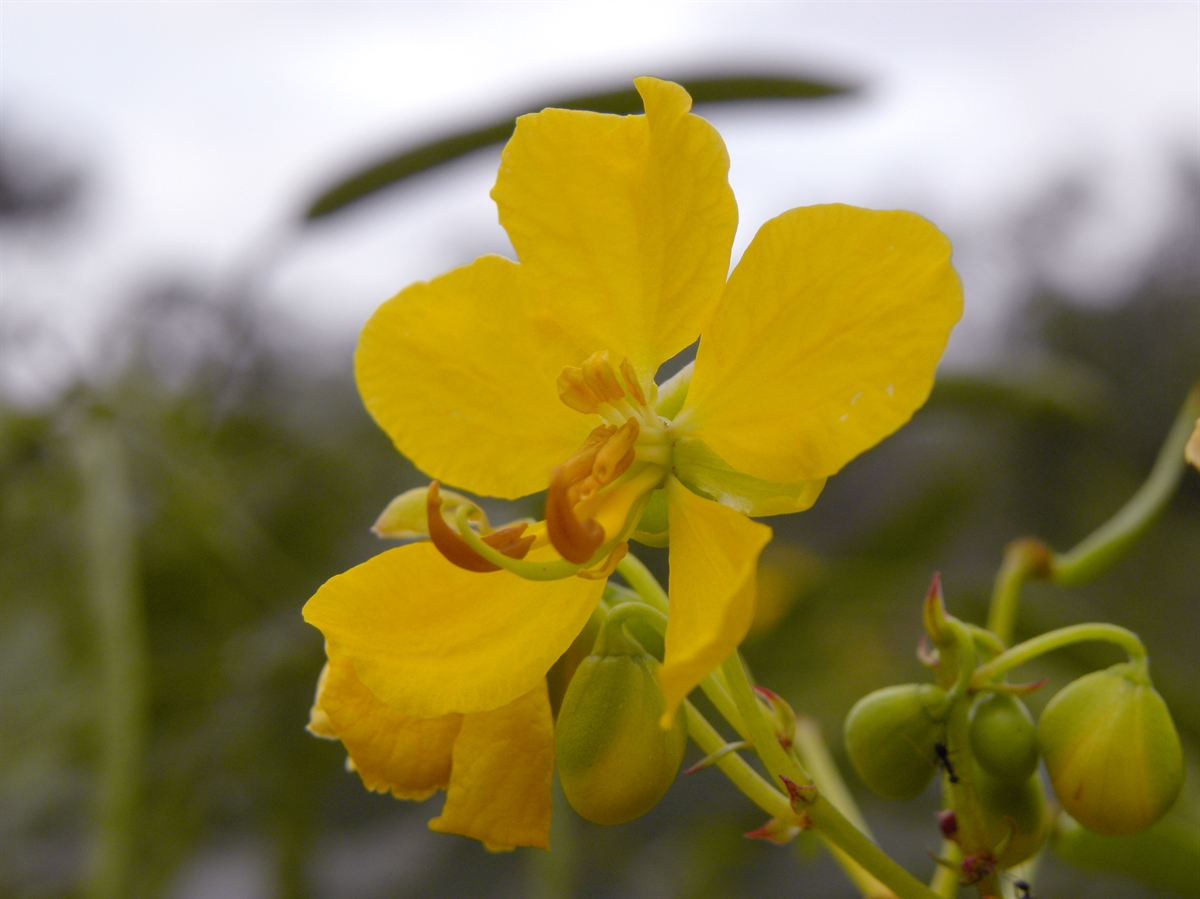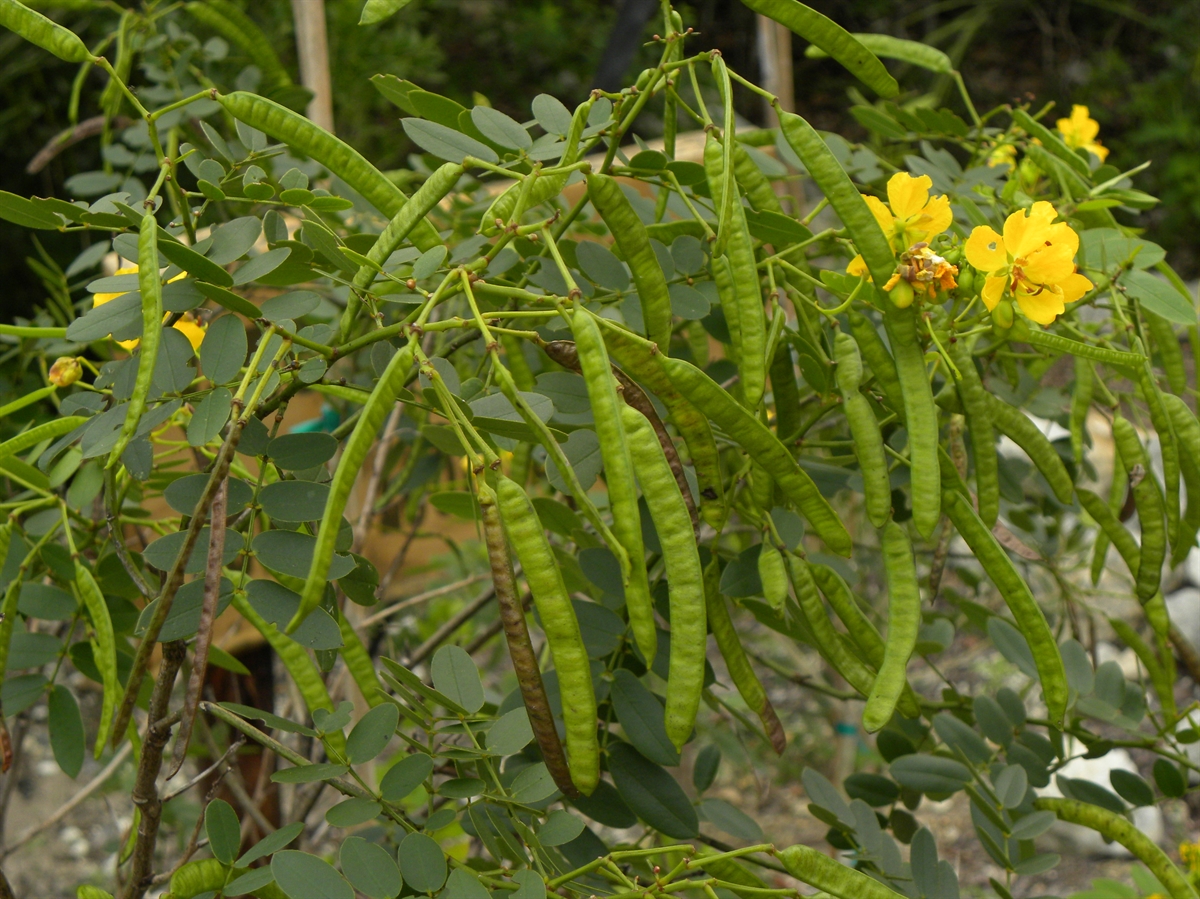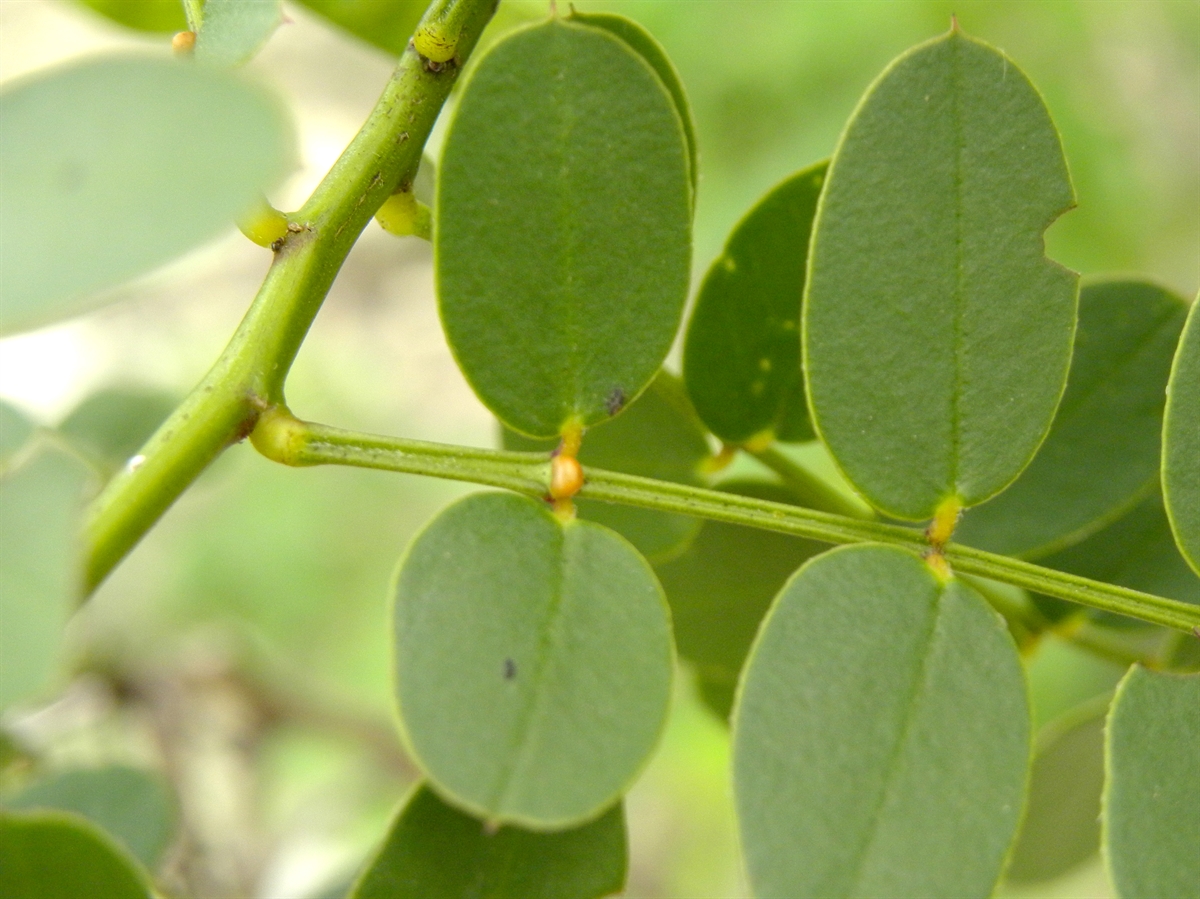Habit: Senna chapmanii grows as a medium shrub to small tree sometimes up to 8 meters in height, usually much smaller. The bipinnately compound leaves are alternately arranged. The petioles have a distinct gland between the lower pinnae or on the petiole, which is sessile and dome shaped and is distinct to S. chapmanii. The leaflets are in 4-5 pairs, elliptic, acute to mucronate at the leaf apex, with an entire margin.
The complete, perfect, zygomorphic flowers are arranged in axillary racemes or panicles. The calyx has 5 greenish unfused sepals. The corolla has 5 yellow unfused petals, none of which form a keel. There are 9 stamens of which only 7 are fertile. The ovary is superior and forms a legume at maturity. The legume is constricted transversely between seeds giving a distinct ladder-like appearance to the fruit.
Habitat: Senna chapmanii grows in Pine Woodlands, Dunes, and Human Altered environments in and around abandoned fields/houses and roadsides.
Distribution: Senna chapmanii occurs on all island groupings within the Lucayan Archipelago as well as in south Florida and Cuba.
Medicinal/Cultural/Economic usage: Senna chapmanii is used in the Lucayan Archipelago to treat eye infections/irritations, to fight colds and fevers and for dermatological issues.
It is also used in the horticultural industry.
Other species of Senna have been used to make teas, and to treat ringworm, dermatological inflammation, hemorrhoids, and general gastrointestinal distress.


